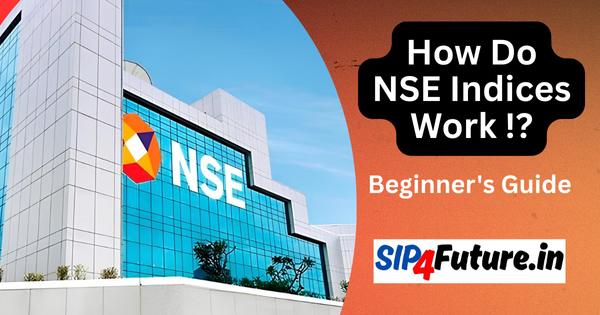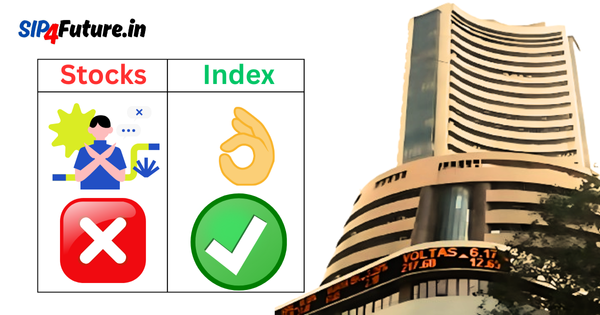Bajaj Housing Finance Limited (BHFL) has cemented its position as a key player in India’s housing finance sector with its recent ₹1000.03 crore Non-Convertible Debenture (NCD) allotment. This strategic move, executed on a private placement basis, underscores BHFL’s robust financial strategy and growth ambitions for 2025. As of May 2, 2025, BHFL’s stock price on the National Stock Exchange (NSE) stood at ₹122.32, reflecting a modest 0.26% uptick, signaling steady investor confidence. This article delves into the intricacies of BHFL’s NCD issuance, its implications for the housing finance sector, stock performance, government policies, global market dynamics, and future outlook.
What Is the Bajaj Housing Finance NCD Allotment?
Bajaj Housing Finance recently raised ₹1000.03 crore by issuing 1,00,000 NCDs, each with a face value of ₹1,00,000, at a coupon rate of 7.14% per annum. These secured debentures, maturing on February 26, 2027, carry a tenure of 665 days, with interest payments disbursed annually and upon maturity. The NCDs are backed by a first pari-passu charge on BHFL’s book debts and loan receivables, maintaining a security cover of 1.00 times the outstanding debenture value. This structure ensures investor protection while enabling BHFL to bolster its liquidity for lending operations.
The NCD issuance aligns with BHFL’s strategy to diversify its funding sources, a critical move in a competitive non-banking financial company (NBFC) landscape. By opting for private placement, BHFL targets institutional investors, reducing reliance on traditional bank borrowings. This approach not only optimizes borrowing costs but also strengthens BHFL’s balance sheet, positioning it for sustained growth in the housing finance market.
How Does the NCD Issuance Impact BHFL’s Financial Strategy?
The ₹1000 crore NCD allotment enhances BHFL’s financial flexibility, enabling it to meet rising demand for home loans and other financing products. As a subsidiary of Bajaj Finance Limited, BHFL benefits from strong parentage, which bolsters its credibility among investors. The funds raised are likely to support BHFL’s expansion in retail housing loans, developer financing, and loan-against-property segments, capitalizing on India’s growing real estate market.
Key Financial Metrics of BHFL (Q4 FY25)
| Metric | Value | Year-on-Year Change |
|---|---|---|
| Net Profit | ₹586.68 crore | +53.85% |
| Revenue from Operations | ₹2507.96 crore | +25.62% |
| Assets Under Management (AUM) | ₹1.14 lakh crore | +25.5% |
| Gross NPA | 0.29% | +0.02% |
| Net NPA | 0.11% | +0.01% |
Source: Moneycontrol, NDTV Profit
BHFL’s Q4 FY25 results reflect robust growth, with a 53.85% surge in net profit to ₹586.68 crore and a 25.62% increase in revenue to ₹2507.96 crore. The company’s Assets Under Management (AUM) grew by 25.5% to ₹1.14 lakh crore, underscoring its ability to scale operations. The low gross non-performing asset (GNPA) ratio of 0.29% highlights BHFL’s prudent risk management, a critical factor in maintaining investor trust.
What Drives BHFL’s Stock Performance in 2025?
BHFL’s stock performance in 2025 has been a mixed bag, influenced by market volatility, sector dynamics, and geopolitical events. As of May 2, 2025, the stock traded at ₹122.32 on the NSE, a marginal increase of 0.26%. However, the stock has faced challenges, with a year-to-date (YTD) decline of 1.49% and a 20.09% drop over the past month, partly due to a market sell-off triggered by a terror attack in Pahalgam on April 25, 2025, which led to a 1,100-point Sensex crash.
Despite short-term volatility, BHFL’s stock has shown resilience, gaining 70% from its IPO price of ₹70, though it remains 17% below its listing high of ₹188.45. The stock’s price-to-earnings (P/E) ratio of 47.66 is significantly higher than the sectoral P/E of 19.32, indicating premium valuations. This suggests that while BHFL commands strong investor interest, concerns about stretched valuations persist.
Stock Performance Snapshot (as of May 2, 2025)
| Parameter | Value |
|---|---|
| Stock Price (NSE) | ₹122.32 |
| Daily Change | +0.26% |
| YTD Return | -1.49% |
| 52-Week High | ₹188.45 |
| 52-Week Low | ₹103 |
| P/E Ratio | 47.66 |
Source: CNBC TV18
Analysts remain divided on BHFL’s stock outlook. While some, like Phillip Securities (Buy, ₹140 target), are optimistic about BHFL’s growth in the home loan segment, others, such as HSBC (Reduce, ₹100 target), cite concerns over high valuations and competitive pressures. The end of the one-year shareholder lock-in period on April 15, 2025, freed up 64% of BHFL’s equity, contributing to a 5% stock surge that day.
How Do Sector Trends Influence Bajaj Housing Finance?
The housing finance sector in India is poised for growth, driven by rising urbanization, increasing disposable incomes, and government initiatives like the Pradhan Mantri Awas Yojana (PMAY). BHFL, as a leading NBFC registered with the National Housing Bank (NHB), is well-positioned to capitalize on these trends. The sector’s growth is further supported by a stable interest rate environment, with the Reserve Bank of India (RBI) reducing the repo rate by 25 basis points to 6% on April 9, 2025, boosting affordability for homebuyers.
However, the sector faces challenges, including intense competition from banks and other NBFCs, which has led to yield compression for BHFL. HSBC noted that BHFL’s high cost-to-income ratio and normalizing credit costs could pressure earnings per share (EPS) in the near term. Additionally, the unseasoned nature of BHFL’s loan portfolio, with 72% CAGR in AUM over the past seven years, raises concerns about potential asset quality issues.
When Have Government Decisions Impacted BHFL’s Stock Price?
Government policies play a pivotal role in shaping the housing finance sector and BHFL’s stock performance. The RBI’s repo rate cut in April 2025 provided a tailwind for NBFCs by reducing borrowing costs and stimulating loan demand. However, the same decision contributed to a broader market dip, as investors reacted to concerns over impending US tariffs.
The government’s continued emphasis on affordable housing through PMAY has been a boon for BHFL, which targets the ₹50 lakh home loan segment, addressing 65% of India’s home loan aspirants. Additionally, the Union Budget 2025 is expected to introduce further incentives for first-time homebuyers, potentially boosting BHFL’s loan disbursements. Conversely, geopolitical tensions, such as the Pahalgam terror attack, have triggered market sell-offs, impacting BHFL’s stock alongside other financials.
What Is the Global Market Scenario Affecting BHFL?
The global market environment in 2025 presents both opportunities and challenges for BHFL. Rising geopolitical tensions and US tariffs have introduced volatility in emerging markets, including India. The Sensex and Nifty’s six-day rally until April 22, 2025, driven by strong banking stocks, initially supported BHFL’s stock price. However, subsequent market corrections, exacerbated by global uncertainties, have weighed on investor sentiment.
Globally, central banks’ monetary tightening to curb inflation has increased borrowing costs, indirectly affecting NBFCs like BHFL that rely on debt financing. The US Federal Reserve’s stance on interest rates continues to influence foreign institutional investor (FII) flows into India. As of March 31, 2025, FII holding in BHFL stood at 18.90%, a slight decrease from the previous quarter, reflecting cautious foreign investment amid global volatility.
How Does BHFL Compare to Its Peers?
BHFL operates in a competitive landscape alongside peers like LIC Housing Finance, PNB Housing Finance, and HDFC Ltd. (now merged with HDFC Bank). BHFL’s low GNPA of 0.29% and strong AUM growth of 25.5% set it apart, but its high P/E ratio of 47.66 raises valuation concerns compared to the sectoral average of 19.32.
Peer Comparison (Q4 FY25)
| Company | AUM (₹ crore) | Net Profit (₹ crore) | GNPA (%) | P/E Ratio |
|---|---|---|---|---|
| Bajaj Housing Finance | 1,14,000 | 586.68 | 0.29 | 47.66 |
| LIC Housing Finance | 2,80,000 | 1,200 | 3.31 | 8.50 |
| PNB Housing Finance | 70,000 | 400 | 1.78 | 12.30 |
Source: Company Reports, BSE India
While BHFL’s asset quality is superior, its premium valuations and competitive pressures necessitate cautious optimism. The company’s focus on the mid-ticket home loan segment and digital transformation initiatives give it a competitive edge.
What Lies Ahead for Bajaj Housing Finance?
BHFL’s future hinges on its ability to navigate competitive pressures, maintain asset quality, and capitalize on India’s housing boom. Analysts project a mixed outlook, with targets ranging from ₹82 to ₹166, reflecting diverse views on BHFL’s growth trajectory.
Analyst Price Targets for BHFL
| Research Firm | Recommendation | Target Price (₹) | Potential Upside/Downside |
|---|---|---|---|
| Phillip Securities | Buy | 140 | +14.4% |
| ULJK Financial Services | Buy | 166 | +35.6% |
| HSBC | Reduce | 100 | -18.3% |
| Goldman Sachs | Sell | 82 | -33.0% |
| Ambit Capital | Sell | 82 | -33.0% |
Source: CNBC TV18
Historical Returns of BHFL
| Time Frame | Return (%) |
|---|---|
| Since IPO (Sep 2024) | +70% |
| YTD (2025) | -1.49% |
| Last 1 Month | -20.09% |
| Last 5 Years | -19.48% |
Source: LiveMint
The positive outlook for BHFL stems from its strong fundamentals, low NPAs, and strategic NCD issuance, which bolster its liquidity. However, high valuations, competitive pressures, and global uncertainties warrant caution. Investors should monitor BHFL’s ability to sustain AUM growth and manage credit costs in a dynamic market environment.
Conclusion
Bajaj Housing Finance’s ₹1000 crore NCD allotment marks a significant milestone in its growth journey, reinforcing its position in India’s housing finance sector. With a robust Q4 FY25 performance, low NPAs, and strategic funding, BHFL is well-poised to capitalize on India’s real estate boom. However, challenges like high valuations, competitive pressures, and global market volatility require careful navigation. As government policies and sector trends continue to shape BHFL’s trajectory, investors must weigh its strong fundamentals against short-term risks.
Disclaimer: The information provided in this article is for educational purposes only and should not be construed as investment advice. Stock market investments are subject to risks, and past performance is not indicative of future results. Readers are encouraged to consult with a qualified financial advisor before making any investment decisions.




